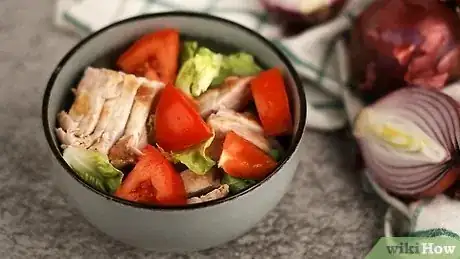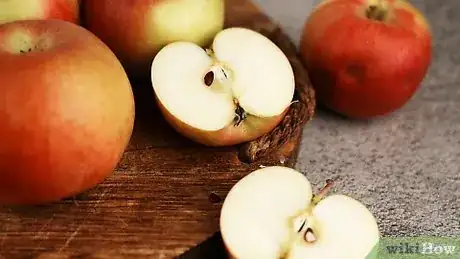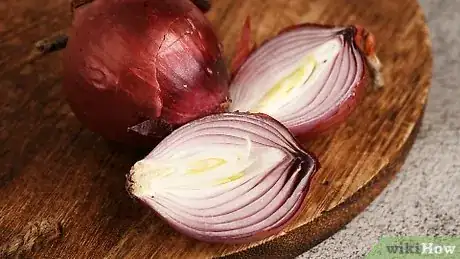wikiHow is a “wiki,” similar to Wikipedia, which means that many of our articles are co-written by multiple authors. To create this article, 9 people, some anonymous, worked to edit and improve it over time.
There are 9 references cited in this article, which can be found at the bottom of the page.
The wikiHow Culinary Team also followed the article's instructions and verified that they work.
This article has been viewed 111,038 times.
Learn more...
Anyone who has suffered with heartburn or other acid-related stomach problems may benefit from learning to reduce acidity in cooking. A few simple steps can reduce acids in foods such as sauces, casseroles, meats, and fish, and allow you to enjoy foods without discomfort.
Steps
-
1Sprinkle small amounts of baking soda gradually into food during cooking to reduce the acidity in the food. Taste the food often, until the tart flavor of the food is reduced. Baking soda is sodium bicarbonate, which is a form of salt. If you are concerned about your sodium intake, add as little baking soda as possible until the food's tartness (and acid) is sufficiently reduced.[1]
-
2Cook dishes for the shortest time possible so that water isn't cooked away and acid isn't concentrated in a smaller volume of food. Simmering soups, casseroles, sauces and other dishes reduces water.Advertisement
-
3Prepare meat, fish or fowl separately from the sauce so the meat doesn't absorb acids from the sauce. If you are making spaghetti and meatballs, cook the sauce and meatballs separately, then add them together just before serving. This will prevent the meat from soaking up acid.
-
4Get protein in your diet by eating lean meats, London broil steak, skinless chicken, fish and egg whites as they are foods low in acid.
-
5Incorporate high-alkaline foods into high-acid foods, as the alkalinity reduces the acidity. For example, to reduce acids in meat or fish casseroles, add peas, carrots or eggs, which are alkaline.[2]
-
6Reduce the phytic acid in legumes and beans by soaking the beans in hot water overnight before cooking. In addition to reducing the acid, soaking beans in hot water makes your body better able to absorb the nutritious minerals in the beans.
- Reduce the phytic acid content of grains by soaking them the same way you soak beans.
-
7Reduce acid in a balsamic vinaigrette salad dressing by making the dressing with equal amounts of vinegar, oil and strong tea.
-
8Cook with extra virgin olive oil or switch to a different type of oil, as olive oil is more acidic than other oils. Canola oil is low in acid and healthful in other ways.
-
9Incorporate low acid fruits into your diet by eating sweet apples, mangoes, bananas and melons.[3]
-
10Increase your consumption of vegetables, as most vegetables can be prepared with little oil.[4]
-
11Eat low-fat foods to avoid acid, including skim milk, goat cheese and lower-fat or fat-free prepared foods.[5]
-
12Avoid onions, which are high in acid.[6]
References
- ↑ https://www.thekitchn.com/pantry-basics-whats-the-differ-40514
- ↑ https://www.aarp.org/health/conditions-treatments/info-2017/foods-help-acid-reflux-fd.html
- ↑ https://www.cookinglight.com/eating-smart/nutrition-101/foods-that-help-acid-reflux
- ↑ https://www.webmd.com/diet/ss/slideshow-powerhouse-vegetables
- ↑ https://www.nhlbi.nih.gov/health/educational/lose_wt/eat/shop_lcal_fat.htm
- ↑ https://www.webmd.com/heartburn-gerd/features/top-10-heartburn-foods#1
- https://www.webmd.com/digestive-disorders/features/foods-that-fight-heartburn
- https://www.webmd.com/heartburn-gerd/features/heartburn-foods-to-avoid
- http://www.mediterraneanbook.com/2010/08/15/list-good-acid-foods-eat-reduce-stomach-acid-reflux/





















































